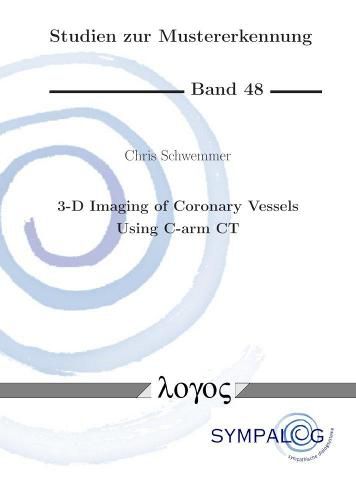Readings Newsletter
Become a Readings Member to make your shopping experience even easier.
Sign in or sign up for free!
You’re not far away from qualifying for FREE standard shipping within Australia
You’ve qualified for FREE standard shipping within Australia
The cart is loading…






Cardiovascular disease has become the number one cause of death worldwide. For the diagnosis and therapy of coronary artery disease, interventional C-arm-based fluoroscopy is an imaging method of choice. While these C-arm systems are also capable of rotating around the patient and thus allow a CT-like 3-D image reconstruction, their long rotation time of about five seconds leads to strong motion artefacts in 3-D coronary artery imaging.
In this work, a novel method is introduced that is based on a 2-D–2-D image registration algorithm. It is embedded in an iterative algorithm for motion estimation and compensation and does not require any complex segmentation or user interaction. It is thus fully automatic, which is a very desirable feature for interventional applications. The method is evaluated on simulated and human clinical data.
Overall, it could be shown that the method can be successfully applied to a large set of clinical data without user interaction or parameter changes, and with a high robustness against initial 3-D image quality, while delivering results that are at least up to the current state of the art, and better in many cases.
$9.00 standard shipping within Australia
FREE standard shipping within Australia for orders over $100.00
Express & International shipping calculated at checkout
Cardiovascular disease has become the number one cause of death worldwide. For the diagnosis and therapy of coronary artery disease, interventional C-arm-based fluoroscopy is an imaging method of choice. While these C-arm systems are also capable of rotating around the patient and thus allow a CT-like 3-D image reconstruction, their long rotation time of about five seconds leads to strong motion artefacts in 3-D coronary artery imaging.
In this work, a novel method is introduced that is based on a 2-D–2-D image registration algorithm. It is embedded in an iterative algorithm for motion estimation and compensation and does not require any complex segmentation or user interaction. It is thus fully automatic, which is a very desirable feature for interventional applications. The method is evaluated on simulated and human clinical data.
Overall, it could be shown that the method can be successfully applied to a large set of clinical data without user interaction or parameter changes, and with a high robustness against initial 3-D image quality, while delivering results that are at least up to the current state of the art, and better in many cases.